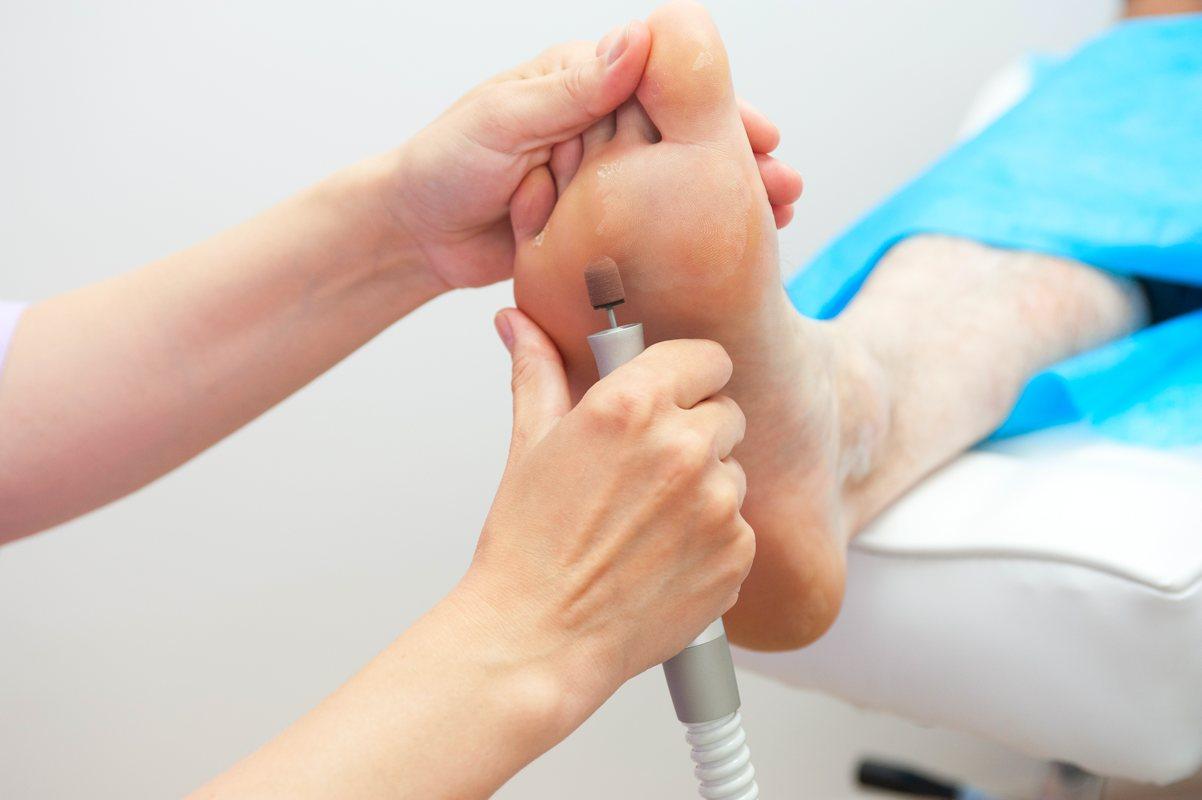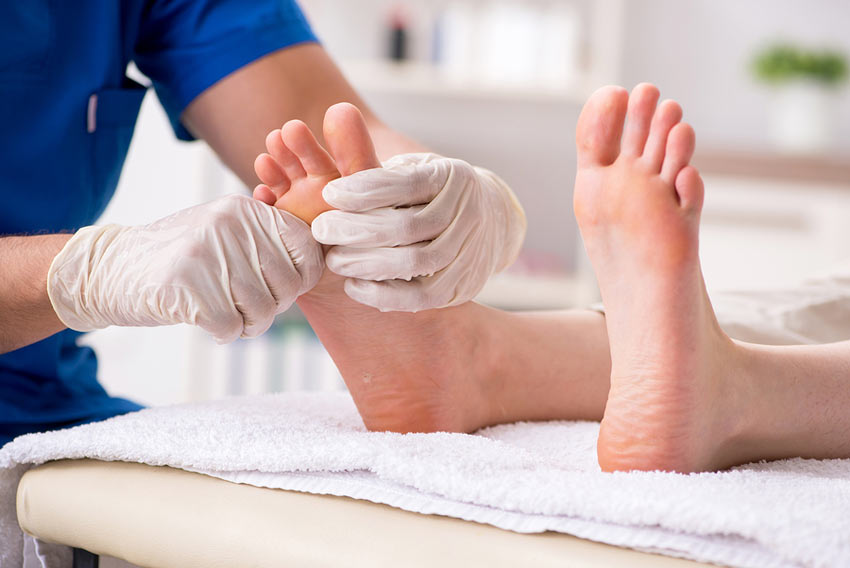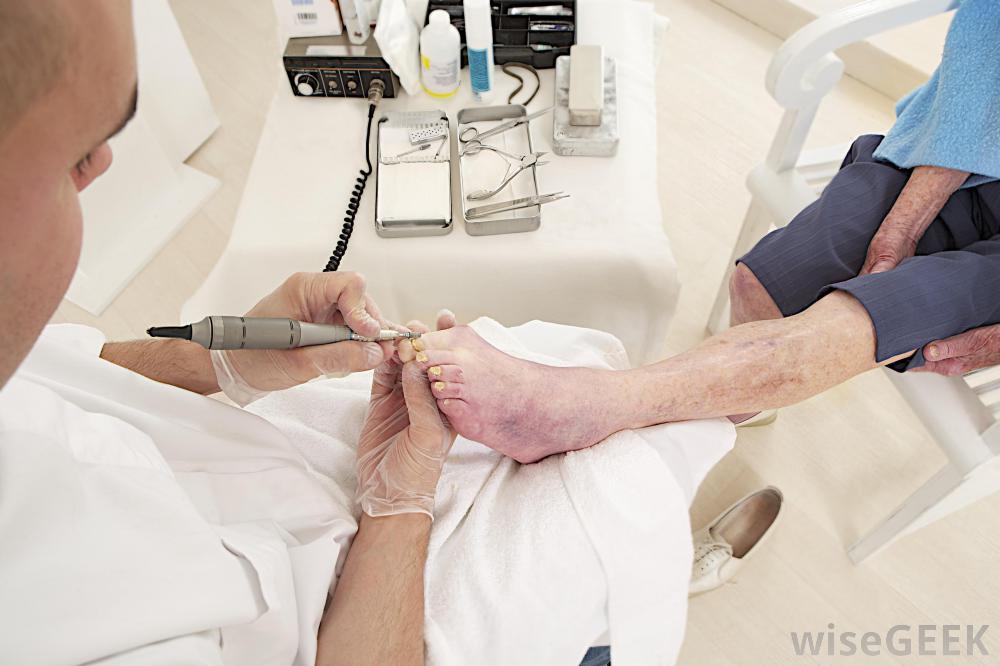Podiatry – the branch of medicine which focuses mainly in specializing in the diagnosis as well as treatment of foot problems and conditions related to the lower legs. Whereas, a chiropodist is a healthcare professional that would help in preventing, diagnosing and treating conditions of the feet.
It would not be incorrect to say that there is no technical difference between a chiropodist and a podiatrist in regards to how they work. A chiropodist and chiropody are the non-operational terms for doctors who would specialize in foot problems and they are respectively replaced by “podiatrist” and “podiatry” around the second half of the 20th century.
Now that we are aware that these two terms are interchangeable, let’s know what a foot doctor can actually do to alleviate your foot problems. If you are suffering from any kind of foot issues, minor or severe, you should visit a chiropody or podiatry clinic. Only a specialized foot doctor is capable of diagnosing and treating issues with your feet, ankles, and lower limbs.
An important difference between podiatry and chiropody is a cause of confusion, however they are in fact the same. A podiatrist and chiropodist are medical professionals who are specialized in the treatment of the lower limb and both can help with minor to severe foot problems.

HISTORY
Early in the 60s and 70s, chiropody wasn’t considered as an official branch of medicine. A chiropodist would primarily deal with providing foot inserts helping to ease the pain of their patients. The people suffering from arthritis, diabetes, and sports injuries would mostly visit the chiropodists.
In the 19th century the first licensed physicians specialized in the study and care of the lower legs as well as feet. He specialized in chiropody from the first officially recognized medical organization for foot doctors that was established in 1895 in New York, and this was later recognized as the first society of chiropodists which is now known as the NYSPMA, or the New York State Podiatric Medical Association.
Difference between Podiatrist and Chiropodist
In 1911 the first official school for chiropody was opened. In the UK, chiropody became widely recognized after the establishment of London Foot Hospital established in 1912 and later in 1919 a chiropody school was opened.
In Australia, professional chiropody practice started appearing from the 1920s. Doctors who specialized in foot pain were known as chiropodists by World War II, and awarded a US degree known as a Doctor of Surgical Chiropody.
CHANGE FROM CHIROPODY TO PODIATRY
Although, as per the study both terms are interchangeable but some countries such as Canada, still officially use the term chiropody for foot and ankle medical care.
However, countries like US and UK started using Podiatry since 1960 mainly for 2 reasons:
- Confusion with Chiropractors: Chiropodists were getting confused with chiropodists around the 1950s and 1960s as chiropractic medicine was growing in popularity. Thus, to avoid confusion with chiropractors, term podiatry for podiatrists was introduced
- Clearer Root: The term “podiatry” describes more accurately the foot and ankle care in comparison to “chiropody”. “Chiropody” is derived from greek language and consists of two root words – “chiro” meaning hands, and “pod” meaning foot in Greek language.
The word “podiatry” also originates from Greek language and consists of 2 words – “pod” meaning foot and “iatros”, which means “physician” in Greek. Thus, changing the word from chiropody to podiatry allowed a better understanding of the modern reality of the podiatric profession and thus becoming a recognized branch of modern medical care instead of unofficial specialization performed by some physicians.

WHAT DOES A CHIROPODIST OR PODIATRIST DO?
The chiropodist or podiatrists work mainly to relieve your foot problems. If you are suffering from any foot issues, either minor or severe, it is important to visit a chiropody or podiatry clinic. A specialized foot doctor would properly diagnose as well as treat issues with your feet, ankles, and lower limbs.
Calluses and corns, hard skin on the feet, and bunions are common foot problems people may suffer. You might usually ignore these issues for years, thinking they wouldn’t cause any harm.
But this is not the case and the problem might escalate and soon cause pain even when doing mild movements. A podiatrist would remove calluses, bunions, and hard skin using safe and non-invasive procedures to help relieve the discomfort and pain (if any).
Another common problem that podiatrists deal with is ingrown toenails which might be very painful such that the simple task of walking is usually unbearable. A podiatrist would diagnose and identify the root of the problem and advise you ways to properly care for your feet. The same is taken care while treating any kind of fungal or nail infection.
They help in preventing deformities and treat various foot problems such as:
- Thickened toe nails
- Verrucas
- Athlete’s foot
- Ingrown toenails
- Corns and calluses
- Bunions
- Blisters
- Heel problems, including pain or cracked heels
- Sports injuries
- Gout
- Smelly feet
- Flat feet
Many chiropodists or podiatrists provide a detailed assessment of how you walk or run, and whether this is alleviating problems in your feet or lower limbs. To treat the above conditions, they would provide orthotics such as shoe padding, insoles, exercises, acupuncture and general advice on the best footwear.
Some of the common treatments done by a chiropodist or podiatrist are:
- Relief of foot pain as well as lower limb pain
- Prescription and provision of orthotics or specialist shoe insoles
- Use of techniques including minor surgery with the help of local anesthetics.
- Preventative care for people with specific conditions like diabetes, poor circulation and various forms of arthritis
- Recognition of systemic medical conditions that manifest themselves within the foot and alleviation of the effects of these disorders like
- inflammation or ulceration.
- Routine care of foot problems such as ingrown nails, corns and callus.
- Podiatry assessments as well as treatments
Podiatrist is different from an orthopedic surgeon, who deals with skeletal problems around the whole body, whereas a podiatrist would deal solely with your foot problems. A podiatrist would work closely with the orthopedic surgeon if you have any skeletal problems with your feet which require surgical intervention.

PREVENTION IS CURE
Chiropodists or podiatrists always select preventive measures over surgery. Irrespective of the kind of foot problem you have, a podiatrist would give you tips on preventing the condition from getting worse. They also help in finding ways to minimize your pain and discomfort by prescribing the right footwear as well as custom orthotic inserts whenever required.
Surgery is usually the last resort. Podiatrists only use this approach for any serious foot issues. This is exactly why you should consult a foot doctor as soon as possible if you feel any abnormalities in your feet, ankles, or lower limbs. It is better to have the problem diagnosed early rather than letting it worsen to the point where a podiatrist would recommend you to undergo surgery to return back to your normal life.
OUTLOOK
It is not incorrect to say that a chiropodist and podiatrist are both interchangeable. In some countries the term chiropody is still used instead of podiatry. And without any doubt, they should be the first ones you should contact if you are facing any kind of foot condition or foot-related injury. It is important to keep in mind that even mild pain in your foot might accelerate quickly.
If you or anyone you know is suffering from foot problems, our expert providers at Specialty Care Clinics will take care of your health and help you recover.
Call us on (469) 545-9983 to book an appointment with our specialists.
